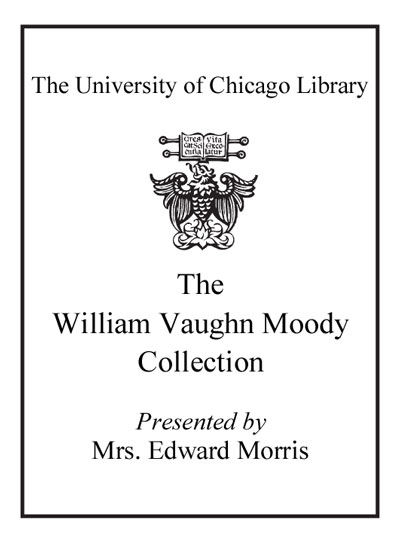Review by Booklist Review
By looking at just one book, this case study of an attempt to censor John Steinbeck's Grapes of Wrath exposes the wrongheadedness of censorship in a way that more theoretical arguments often fail to do. It happened in 1939, just after the book's publication, when Grapes was a massive best-seller. It was Stanley Abel, a member of the Kern County, California, Board of Supervisors, who started the movement to ban the book (in the novel, the Joad family settles in Kern County). He was supported by a cotton grower in the county and by a farmer who took personal offense to the way Steinbeck portrayed the county and its people. Luckily, there were also sensible people, like librarian Gretchen Knief, who spearheaded a movement to keep the novel out of the clutches of the book banners. This is a skillfully written, passionate book about a shameful episode in the history of American literature and politics. Wartzman has really done his homework, and he tells the story dramatically, using character and dialogue to propel the narrative.--Pitt, David Copyright 2008 Booklist
From Booklist, Copyright (c) American Library Association. Used with permission.
Review by Publisher's Weekly Review
During May of 1939, as the Nazis were burning books throughout Germany, the people of Bakersfield Calif., did exactly the same thing with John Steinbeck's new bestseller, The Grapes of Wrath. As Wartzman (The King of California) shows in this intriguing account, the banning of Steinbeck's masterpiece throughout California's Kern County was orchestrated by rich local growers: men who were busy exploiting scores of Joad families, the very men Steinbeck exposed in his novel. As a pretext, the growers cited, among other things, Steinbeck's use of foul language (bastard, bitch) and vivid scenes such as Rose of Sharon, having lost her baby, offering her milk-filled breast to a starving man. One lone librarian, Gretchen Knief, led the charge against the censors, but the book--by then a Pulitzer Prize winner--remained banned a year later. While all this was happening, Steinbeck was suffering the strains of his collapsing first marriage. In telling this unique tale, Wartzman artfully weaves the personal and the political in a book that readers will find engaging on more than one level. (Sept.) (c) Copyright PWxyz, LLC. All rights reserved All rights reserved.
(c) Copyright PWxyz, LLC. All rights reserved
Review by Library Journal Review
On August 21, 1939, the Kern County (CA) Board of Supervisors voted to ban The Grapes of Wrath from its schools and libraries to the chagrin of librarian Gretchen Knief. Wartzman (The King of California: J.G. Boswell and the Making of a Secret American Empire) uses the ban of Steinbeck's best-selling novel as a springboard to discuss the forces that led to it--forces that had more to do with politics than morality. He uses the censorship case as an opportunity to shine a wider light on the political and economic climate of south central California in the wake of the 1930s dust bowl migration, exploring the larger issues that divided radicals and reactionaries, labor and management, social reformers and anticommunists. Detailed portraits of the local businessmen, politicians, and labor leaders caught up in the struggle enliven the text. Recommended for research libraries, especially those with strong collections in labor history and American studies.--William Gargan, Brooklyn Coll. Lib., CUNY (c) Copyright 2010. Library Journals LLC, a wholly owned subsidiary of Media Source, Inc. No redistribution permitted.
(c) Copyright Library Journals LLC, a wholly owned subsidiary of Media Source, Inc. No redistribution permitted.
Review by Kirkus Book Review
Steinbeck's now-classic populist epic did not please everyone in 1939. In the San Joaquin Valley, blisteringly depicted in The Grapes of Wrath as callously hostile to the Joad family and other Dust Bowl refugees, public officials voted on Aug. 21 to remove the bestselling book from the county library system; three days later, three incensed farmers publicly burned a copy. Wartzman (co-author: The King of California: J. G. Boswell and the Making of a Secret Empire, 2003) examines many facets of the difficulties the novel encountered and occasioned. He introduces us to a doughty librarian, some angry Kern County supervisors (plus one more liberal and one waffler), growers, farm workers, lawyers, civil libertarians, journalists, filmmakers, musicians, prudes and assorted wackos. Popping up continually is Steinbeck himself, who said little in public about the contretemps; the writer was suffering creative exhaustion in the aftermath of completing his massive book. Wartzman places the controversy in broad context. We see the effects of the Great Depression, the looming threat of World War II and the fear that communism pervaded labor unions and was corrupting the working class. The narrative follows the broad chronology of the events, but within each chapter the author casts a wide cultural and historical net. We get a bit of the history of California, of the San Joaquin Valley and of the efforts to organize farm workers. We learn about Steinbeck's previous work, his preparations to write the novel, the making of John Ford's 1940 film and the rescinding of the Kern County library ban in 1941. Wartzman sprinkles relevant quotations from Grapes throughout. Generously illustrated and briskly written--a valuable guide to an explosive aspect of the free-speech issue. Copyright ©Kirkus Reviews, used with permission.
Copyright (c) Kirkus Reviews, used with permission.
Review by Booklist Review
Review by Publisher's Weekly Review
Review by Library Journal Review
Review by Kirkus Book Review

